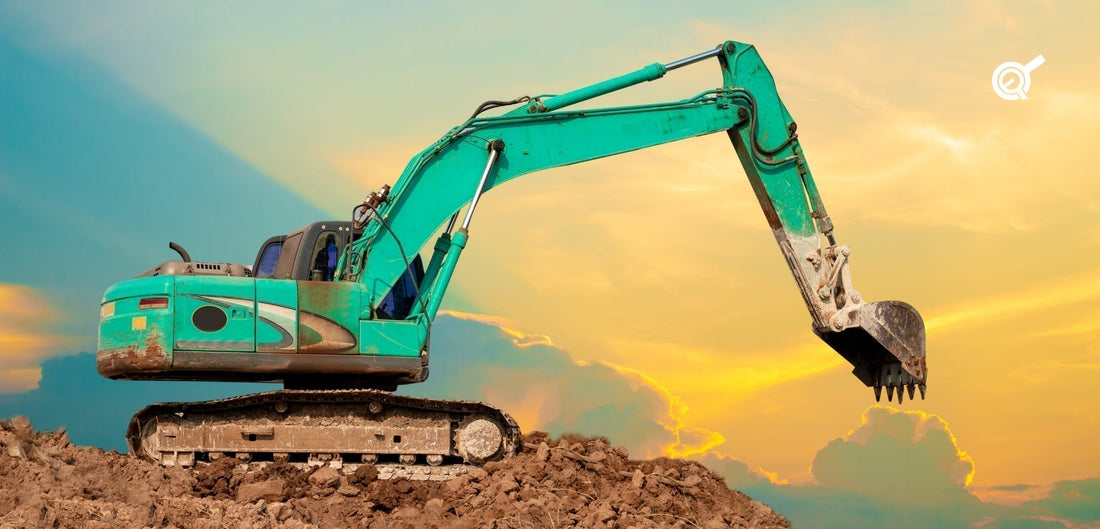Imagine las excavadoras como las herramientas más potentes de la construcción, moviendo tierra y materiales incansablemente. Durante décadas, estas máquinas dependieron de sistemas hidráulicos, una tecnología de eficacia comprobada que impulsaba su trabajo pesado. Pero a medida que las industrias exigían más —mayor precisión, reducción de costos y responsabilidad ambiental—, nació una nueva era en el diseño.
Esta historia de "antes y después" ilustra cómo la tecnología moderna de excavadoras ha avanzado enormemente, impulsada por soluciones accionadas por actuadores que solucionan ineficiencias, aumentan la seguridad y la productividad. Recorramos esta transformación.
Los desafíos del diseño de excavadoras tradicionales
Un sistema estancado en la complejidad
Los sistemas hidráulicos fueron en su día un gran avance en la maquinaria, pero sus defectos pronto se hicieron evidentes. Estas ineficiencias de la maquinaria tradicional se debían a su complejidad:
- Las líneas hidráulicas con fugas requerían reparaciones frecuentes.
- La necesidad de controles y reemplazos regulares de líquidos generó retrasos operativos.
- Su gran peso se sumaba a la carga general, exigiendo más potencia y combustible.
La precisión se pierde en la traducción
Además, los sistemas hidráulicos presentaban dificultades con los controles de precisión, ya que a menudo sobrecorregían o no lograban los movimientos suaves y precisos necesarios para operaciones delicadas. Como resultado, tareas como la excavación de zanjas o la colocación de materiales se volvían ineficientes y consumían mucho tiempo.
Combustible costoso e impacto ambiental
Operar un sistema hidráulico implicaba un alto consumo de combustible. Esto no solo encarecía su funcionamiento, sino que también causaba un daño considerable al medio ambiente, ya que estos sistemas liberaban grandes cantidades de carbono, lo que presionaba cada vez más a las empresas constructoras para que abordaran los problemas ambientales.
Preocupaciones de seguridad y pérdidas de productividad
De hecho, estos desafíos no eran solo técnicos, sino también humanos. La reducción de la seguridad de las excavadoras debido a movimientos bruscos y fallos impredecibles del sistema ponía en riesgo a los operadores. Mientras tanto, las paradas por mantenimiento reducían drásticamente la productividad, lo que convertía cada reparación en un duro golpe para los resultados.

El auge de los actuadores lineales eléctricos en las excavadoras
La chispa de la transformación
Tras analizar todos los desafíos mencionados, la industria de la maquinaria llegó a un punto de inflexión: seguir con sistemas obsoletos o innovar. Los actuadores eléctricos se convirtieron en la respuesta, ofreciendo una alternativa más limpia, sencilla y eficiente. A diferencia de sus predecesores hidráulicos, los actuadores son ligeros, energéticamente eficientes y precisos, lo que supone un avance significativo en la modernización de las excavadoras.
Las ventajas que cambian el juego
-
Control de movimiento de precisión
Los actuadores eléctricos aportan precisión quirúrgica a las operaciones de la excavadora, permitiendo ajustes suaves y precisos. Se acabaron los movimientos bruscos: solo un funcionamiento impecable. -
Reducción de costos de energía
Con menores requerimientos energéticos, los actuadores reducen los costos operativos y las emisiones. Una solución beneficiosa para el presupuesto y el planeta. -
Durabilidad en entornos hostiles
Menos piezas móviles significan menos desgaste. Los actuadores eléctricos sobresalen donde los hidráulicos tienen dificultades, manejando sin esfuerzo condiciones extremas. -
Mantenimiento simplificado
Olvídese del ciclo interminable de cambios de aceite y reparaciones de fugas, ya que los actuadores eléctricos requieren un mantenimiento mínimo, lo que ahorra tiempo y dinero.
Diseño de excavadoras con actuadores lineales eléctricos

La eficiencia se une a la elegancia
La transición a actuadores lineales eléctricos transforma las excavadoras en instrumentos de precisión, capaces de realizar tareas delicadas como excavar zanjas o levantar materiales frágiles. Por ejemplo:
- Las operaciones de excavación son más rápidas y limpias.
- La colocación del material se vuelve más suave y altamente precisa.
- Las tareas de elevación se realizan con un control excepcional.

Redefiniendo la seguridad
Con la seguridad en mente, las excavadoras modernas ahora incluyen sistemas de detección de colisiones, que protegen tanto a los operadores como a las estructuras circundantes: los límites programables garantizan una operación segura, minimizando el riesgo de accidentes.
Un nuevo nivel de versatilidad
Desde obras de construcción con mucha actividad hasta operaciones mineras aisladas, las excavadoras accionadas por actuador se adaptan a la perfección. Su diseño versátil se adapta a diversas aplicaciones de maquinaria pesada, lo que las hace indispensables en diversos sectores.
En Progressive Automations, ofrecemos soluciones de actuadores que optimizan las excavadoras , especialmente las compactas, al proporcionar un control preciso y una automatización avanzada. Controlan las trampillas del techo ( actuador lineal PA-10 ), ajustan la cabina, los asientos ( actuador PA-17 ) y la posición del cucharón, controlan las funciones hidráulicas auxiliares y se integran a la perfección con los sistemas automatizados, simplificando las operaciones, mejorando la productividad y la seguridad, y minimizando el trabajo manual.
El futuro del diseño de excavadoras
Control autónomo e integración de IA
Las posibilidades de la tecnología de excavadoras impulsadas por IA son inmensas. Se han diseñado actuadores eléctricos para impulsar excavadoras autónomas capaces de adaptarse dinámicamente a su entorno y tomar decisiones en tiempo real para maximizar el rendimiento.
Integración de IoT en maquinaria
También podemos imaginar una red de excavadoras que compartan datos sobre desgaste y eficiencia. Los actuadores con IoT allanarán el camino para el mantenimiento predictivo, reduciendo costos y eliminando sorpresas.
Innovaciones en materiales y eficiencia
Los actuadores futuros también pueden utilizar materiales avanzados, mejorando la eficiencia energética y ampliando su ya impresionante vida útil.
Preguntas frecuentes
¿Cómo mejoran los actuadores eléctricos la precisión en las excavadoras?
Al permitir un movimiento suave y controlado, los actuadores eléctricos eliminan las sacudidas que suelen asociarse con los sistemas hidráulicos. Esto permite ajustes precisos, mejorando la precisión en tareas delicadas.
¿Son los actuadores eléctricos rentables para excavadoras grandes?
Por supuesto. La combinación de menor consumo energético, menor mantenimiento y mayor vida útil los convierte en una opción rentable, especialmente para maquinaria de gran tamaño.
¿Qué ventajas de mantenimiento ofrecen los actuadores eléctricos frente a los sistemas hidráulicos?
Los actuadores eléctricos requieren poco mantenimiento por diseño. No requieren comprobaciones de fluidos, tienen menos piezas propensas al desgaste y son mucho menos propensos a fallas inesperadas, lo que reduce el tiempo de inactividad.
En conclusión
La evolución del diseño de excavadoras, desde la hidráulica tradicional hasta los actuadores eléctricos, marca un punto de inflexión para la industria. Los actuadores eléctricos priorizan la precisión, la eficiencia y la sostenibilidad, abordando los desafíos de larga data de la maquinaria tradicional y abriendo nuevas posibilidades.
Para las empresas que están listas para adoptar esta transformación de las excavadoras, este es el momento. Explore nuestra gama de actuadores en Progressive Automations y dé el primer paso hacia la innovación en excavadoras modernas. El futuro de la maquinaria pesada ya está aquí: no se quede atrás.
***
Recursos
- Nuevo diseño de una excavadora eléctrica y su generación de trayectorias para el ahorro de energía — MDPI
- El futuro de la maquinaria de construcción: Actuadores eléctricos vs. hidráulicos — Construction Briefing
- Ahorro de energía en una excavadora autónoma mediante el diseño de actuadores paralelos y la generación de trayectorias basada en PSO — MDPI
- La batalla de los actuadores: una comparación entre la hidráulica y la electromecánica — Revista Automation
- Características energéticas y de funcionamiento de una excavadora eléctrica con un innovador sistema de pluma con accionamiento hidráulico-eléctrico dual — IEEE Xplore




